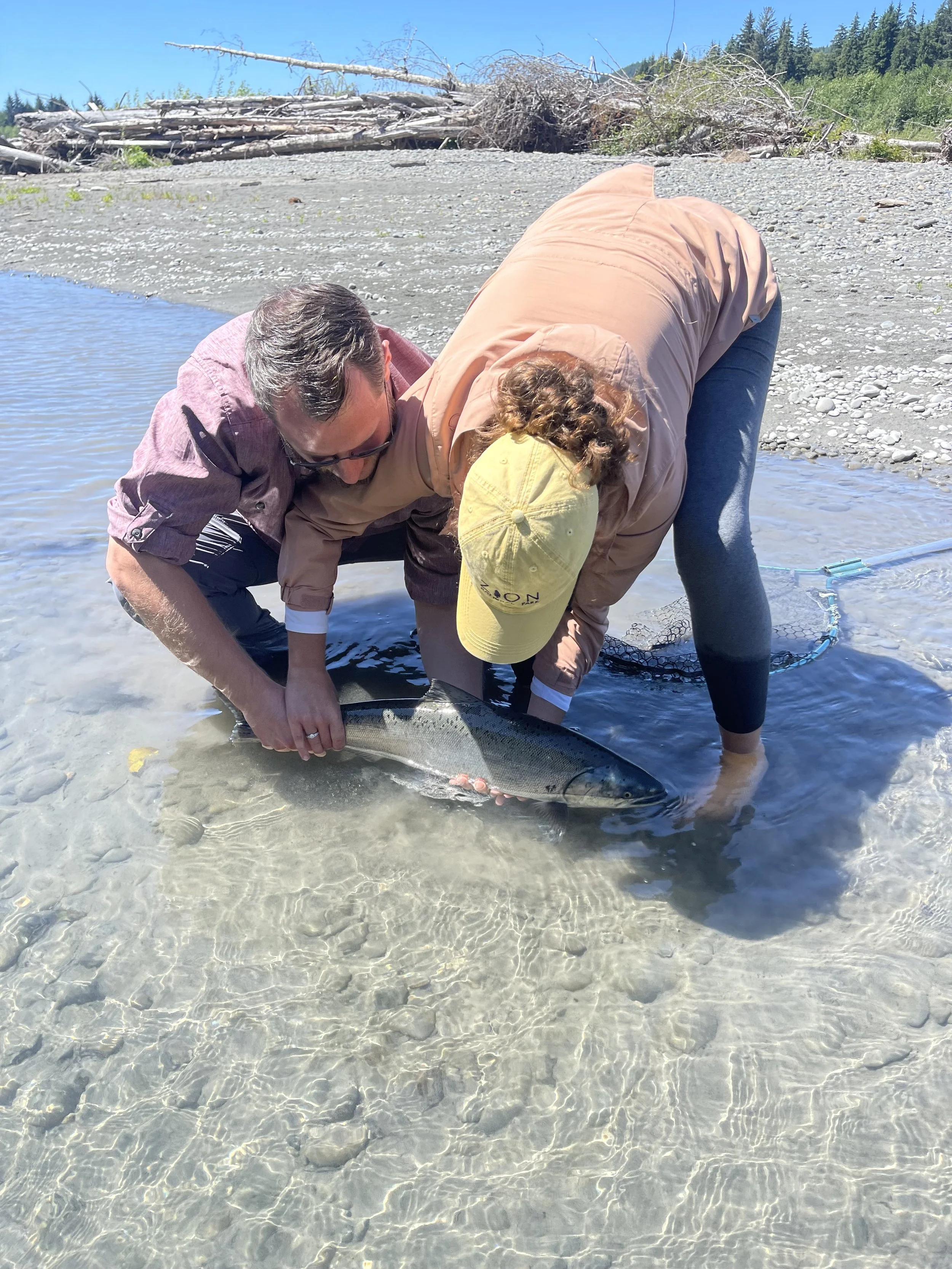Catch-and-Release Tips for Olympic Peninsula Fly Fishing
Fly fishing on the Olympic Peninsula is more than a sport—it’s a connection to wild rivers and thriving ecosystems. From the spring steelhead charging up the Sol Duc to the summer cutthroat trout dancing in the Calawah, these native fish are the heart of the region’s waters. Practicing catch-and-release ensures these populations flourish for future anglers. Whether you’re casting near Forks, Port Angeles, or Sequim, here’s how to release fish responsibly, why it matters locally, and tips to make every catch count in 2025. Let’s keep the Peninsula’s rivers wild!
Why Catch-and-Release Matters on the Olympic Peninsula
The Olympic Peninsula’s rivers—Sol Duc, Hoh, Bogachiel, and others—are home to wild fish populations, including spring steelhead (Oncorhynchus mykiss) and coastal cutthroat trout (Oncorhynchus clarkii clarkii). These species face pressures from habitat loss, climate shifts, and fishing. Spring steelhead, a prized catch in March, are wild and need careful handling to spawn successfully. Summer natives like cutthroat, active June-August, are critical to river ecosystems, supporting food webs and genetic diversity. Responsible catch-and-release preserves these fish, maintains the Peninsula’s world-class fishery, and honors the cultural legacy of local tribes like the Quileute and Hoh, who’ve stewarded these waters for centuries.
Best Practices for Catch-and-Release
Follow these expert tips to release fish safely and minimize stress, tailored to the Peninsula’s wild rivers:
Use Barbless Hooks
Why: Barbless hooks slide out easily, reducing injury and handling time.
How: Pinch barbs with pliers or buy barbless flies
Pro Tip: Check hooks after every catch—bent barbs snag tissue.
Play Fish Quickly
Why: Long fights exhaust fish, lowering survival odds. Steelhead can tire fast in spring’s cold water; cutthroat burn energy in summer’s low flows.
How: Use stout tippet (8-12 lb. for steelhead, 4-6 lb. for cutthroat) and a 5-8 wt. rod to land fish in 1-3 minutes. Avoid overplaying in warm August water (>65°F).
Pro Tip: Keep your drag firm but not locked—let fish run without breaking off.
Keep Fish in the Water
Why: Lifting fish out cuts oxygen supply, stressing gills. Spring steelhead are especially vulnerable post-spawn; summer cutthroat need cool water to thrive.
How: Unhook fish in shallow water (6-12 inches) with wet hands or a rubber net. For steelhead, tail them gently to control.
Pro Tip: Avoid gravel or rocky banks—kneel in the water to keep fish submerged.
Handle with Care
Why: Rough handling damages slime coats, inviting infection. Wild fish like Peninsula steelhead need intact defenses for migration.
How: Wet hands touching fish. Don’t squeeze—support the body lightly. Remove hooks with forceps if possible.
Pro Tip: Skip the grip-and-grin photo if the fish seems stressed (e.g., gasping or sluggish).
Revive Before Release
Why: Exhausted fish need oxygen to recover, especially in spring’s fast currents or summer’s warm pools.
How: Face the fish upstream in gentle current, holding its tail until it swims strongly (30 seconds to 2 minutes). For cutthroat in still water, move them in a figure-8 to push water through gills.
Pro Tip: Don’t release in fast rapids—find a calm pool to let fish regain strength.
Use Proper Gear
Why: The right setup reduces harm. Heavy tackle can tear mouths; light lines prolong fights.
How: For spring steelhead, use 7-9 wt. rods with sinking tips for streamers (e.g., Intruder). For summer cutthroat, 3-5 wt. rods with floating lines for dries (e.g., Parachute Adams). Rubber nets prevent fin damage.
Pro Tip: Avoid knotted nets—they strip slime and tangle fins.
Know the Regulations
Why: Rules protect wild fish. Peninsula rivers often require releasing wild steelhead and cutthroat to preserve stocks.
How: Check WDFW regs—spring steelhead season (December-March) mandates wild fish release; summer cutthroat are catch-and-release only in many streams. Get a Washington freshwater license.
Pro Tip: Carry a pocket guide or download the WDFW app for real-time updates.
Why Conservation Matters Locally
The Olympic Peninsula’s rivers are a global treasure, supporting not just fish but entire ecosystems—otters, eagles, and bears rely on healthy runs. Spring steelhead, often wild, are a keystone species, their spawning cycles enriching rivers like the Bogachiel. Summer cutthroat, both sea-run and resident, link freshwater and marine habitats, sustaining biodiversity. Overfishing in the past has strained these populations, and climate change adds pressure with warmer waters and altered flows. By releasing fish carefully, anglers help maintain the Peninsula’s fishery, which draws thousands to Forks and Port Angeles annually, boosting local economies. Conservation also respects tribal treaty rights, ensuring fish for future generations.
Common Mistakes to Avoid
Lifting Fish High: Keep steelhead or cutthroat in water—air exposure harms gills in under 10 seconds.
Dry Hands/Towels: They strip protective slime; always wet hands or use gloves.
Overhandling: Limit touch—every second out of water stresses fish.
Releasing in Poor Spots: Don’t let fish go in hot, stagnant pools (summer) or raging currents (spring).
How Guides Make a Difference
Mastering catch-and-release takes practice, and Olympic Peninsula rivers like the Hoh or Sol Duc can be tricky—slippery rocks, fast flows, and shy fish demand local know-how. At Anadromy Fly Fishing, our guides are conservation pros, teaching you to land and release fish with minimal impact. We’ll show you the best runs, tie on barbless flies, and share revival tricks honed over decades. Ready to fish responsibly? Contact Us and book your trip now —spring and summer slots fill fast!


